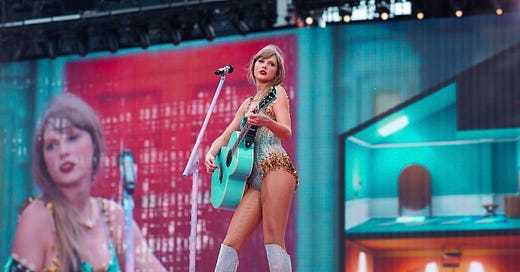Though I admire Taylor Swift as an artist and songwriter, her current “Eras” tour has elevated her fame, stature, and influence attained by only a few: Elvis Presley, the Beatles, possibly the concert experience of Bruce Springsteen. But no woman in recent pop culture memory has crashed this ceiling with the audacity and power of Taylor Swift. So I asked a writer of Generation T (for Taylor) to write about the experience in this guest appearance on Critical Conditions.
By Maria Villarroel
Every few decades, there comes an artist that completely revolutionizes any preconceived notion on what it means to be a performer in the music industry. Such artists lend a mighty voice to a generation who otherwise might have been voiceless. They take common experiences, turn it into something beautiful and proceed to pass it along to others, in hopes of providing some sort of clarity on what it means to be, for instance, a woman, a member of the LGBTQ community, an immigrant, a person, at their give…
Keep reading with a 7-day free trial
Subscribe to Critical Conditions by Wayne Robins to keep reading this post and get 7 days of free access to the full post archives.


